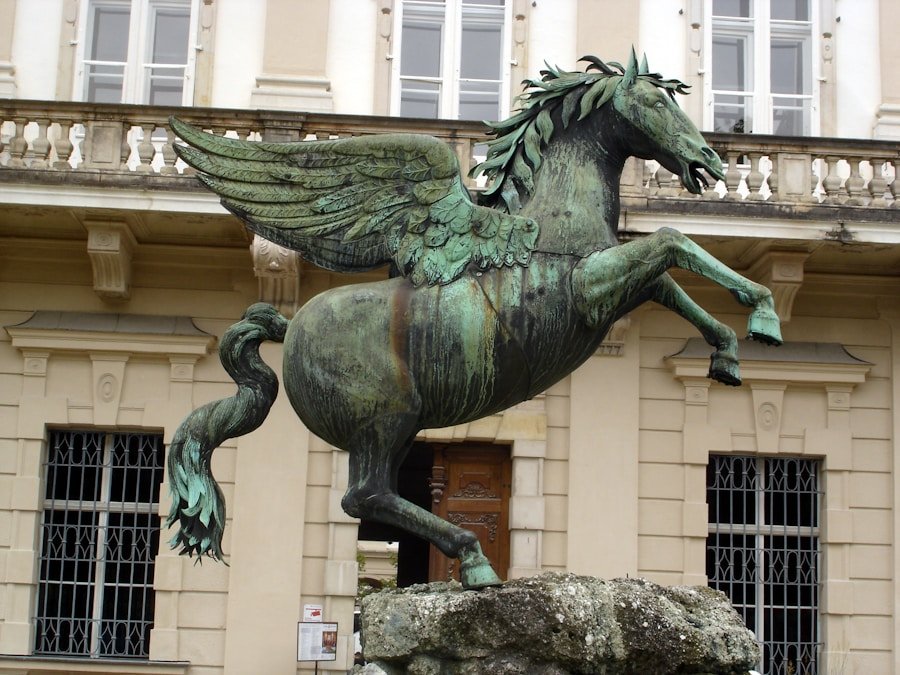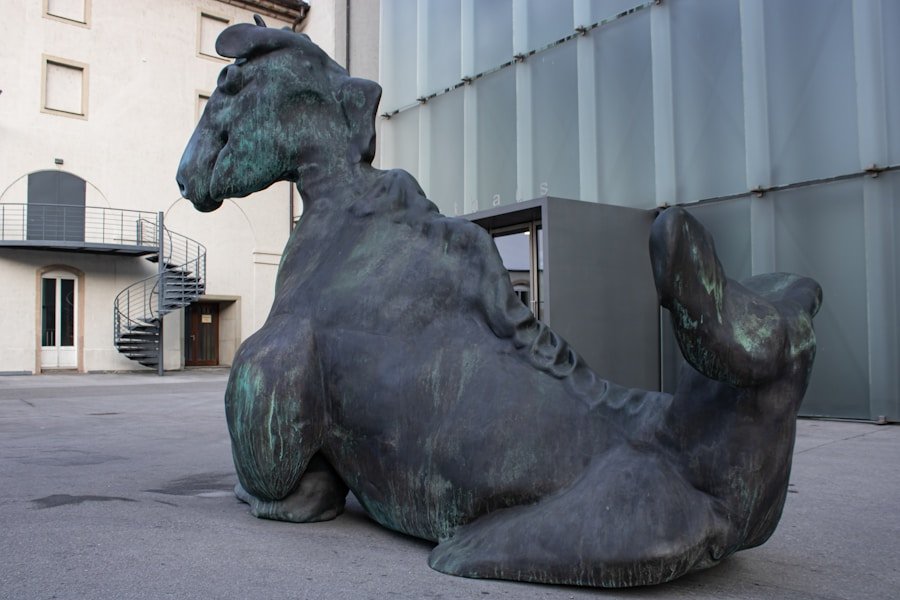Table of Contents
The Oldenburg horse breed has a rich and storied history that dates back to the 17th century in the region of Oldenburg, Germany. Originally bred for agricultural work, these horses were valued for their strength and versatility. The breed’s development began when local farmers sought to create a robust horse capable of performing various tasks, from plowing fields to pulling heavy loads.
The Oldenburgs were initially influenced by the Spanish horses brought to the region, which contributed to their athleticism and grace. As time progressed, the Oldenburg breed evolved to meet the demands of the equestrian world. In the 18th century, the breed began to gain recognition for its exceptional qualities in dressage and jumping.
The establishment of the Oldenburg State Stud in 1773 marked a significant turning point in the breed’s history, as it became a focal point for breeding high-quality horses. The stud aimed to produce horses that not only excelled in agricultural tasks but also in competitive equestrian sports. This dual-purpose approach laid the foundation for the modern Oldenburg horse we know today. Here is the sentence: Learn more about different horse breeds at horse.
Key Takeaways
- The Oldenburg horse breed originated in the 17th century in the Oldenburg region of Germany, where it was initially used as a carriage horse.
- Oldenburg horses are known for their elegant appearance, strong build, and versatile abilities, making them suitable for dressage, show jumping, and eventing.
- The Oldenburg horse has a significant presence in equestrian sports, particularly in dressage and show jumping, with many successful competitors and champions in these disciplines.
- Breeding and registration of Oldenburg horses are carefully managed by the Oldenburg Horse Breeders’ Society, which maintains strict standards for bloodlines and conformation.
- Oldenburg horse associations and organizations, such as the Oldenburg Horse Breeders’ Society and the Oldenburg Verband, play a crucial role in promoting and preserving the breed through breeding programs and events.
Characteristics and Physical Attributes of the Oldenburg Horse
Physical Characteristics
They typically stand between 16 to 17.2 hands high, making them one of the larger warmblood breeds. Their build is characterized by a strong, muscular body, long legs, and a well-defined neck that contributes to their overall elegance.
Head and Coloration
The breed often showcases a refined head with expressive eyes and a straight profile, which adds to their appeal in the show ring. In terms of color, Oldenburgs come in a variety of shades, including bay, black, chestnut, and gray. Many have distinctive markings such as blazes or socks, which enhance their visual charm.
Coat and Overall Impression
Their coat is usually thick and shiny, reflecting their good health. The combination of their physical characteristics and graceful movement makes Oldenburg horses stand out in both competitive and recreational settings.
The Oldenburg Horse’s Role in Equestrian Sports

Oldenburg horses have carved out a prominent niche in the world of equestrian sports, particularly in dressage and show jumping. Their natural athleticism, combined with their trainable temperament, makes them ideal candidates for these disciplines. In dressage, Oldenburgs are celebrated for their fluid movements and ability to perform intricate maneuvers with precision.
Their strong hindquarters provide the power needed for advanced movements, while their intelligence allows them to learn complex routines quickly. In show jumping, Oldenburgs are equally impressive. Their powerful build and keen jumping ability enable them to clear obstacles with ease.
Many successful show jumpers have Oldenburg bloodlines, showcasing the breed’s versatility and talent across various equestrian disciplines. Their success in competitions has solidified their reputation as top-tier performance horses, making them highly sought after by riders around the world.
Breeding and Registration of Oldenburg Horses
| Year | Number of Foals Registered | Number of Mares Bred |
|---|---|---|
| 2018 | 2500 | 1200 |
| 2019 | 2600 | 1250 |
| 2020 | 2700 | 1300 |
Breeding Oldenburg horses is a meticulous process that emphasizes quality over quantity. The Oldenburg Verband, the official breeding association for the breed, maintains strict guidelines for breeding practices to ensure that only the best horses are produced. Breeders focus on selecting individuals with desirable traits such as conformation, movement, and temperament.
This careful selection process helps maintain the breed’s high standards and ensures that each generation improves upon the last. Registration with the Oldenburg Verband is essential for breeders and owners alike. Horses must meet specific criteria to be registered, including lineage verification and performance evaluations.
This registration process not only helps preserve the breed’s integrity but also provides owners with valuable information about their horse’s ancestry and potential. By adhering to these standards, breeders contribute to the ongoing success and recognition of the Oldenburg horse breed.
Oldenburg Horse Associations and Organizations
Several organizations play a crucial role in promoting and supporting the Oldenburg horse breed worldwide. The Oldenburg Verband is the primary governing body responsible for overseeing breeding practices, registrations, and events related to the breed in Germany. They organize inspections, competitions, and educational programs aimed at enhancing the knowledge and skills of breeders and riders alike.
In addition to the German Verband, there are numerous international organizations dedicated to promoting Oldenburg horses outside of Germany. These associations often host competitions, clinics, and educational seminars to foster a community of enthusiasts who share a passion for this remarkable breed. By connecting breeders, owners, and riders globally, these organizations help ensure that the legacy of the Oldenburg horse continues to thrive.
Training and Care of Oldenburg Horses

Developing Skills and Fitness
Consistent training routines that incorporate groundwork, flatwork, and jumping exercises are essential for developing their skills and maintaining their physical fitness.
Care and Health Needs
In terms of care needs, Oldenburgs require a balanced diet rich in high-quality forage, grains, and supplements tailored to their individual needs. Regular veterinary check-ups are crucial for monitoring their health and addressing any potential issues early on.
Hoof Care Essentials
Additionally, proper hoof care is vital for maintaining their overall well-being; regular trimming and shoeing help prevent lameness and other foot-related problems.
Famous Oldenburg Horses in History
Throughout history, several Oldenburg horses have made significant contributions to equestrian sports and breeding programs. One notable example is “Salinero,” an exceptional dressage horse who competed at the highest levels under rider Anky van Grunsven. Salinero’s remarkable performances earned him numerous accolades, including multiple Olympic medals, solidifying his place in equestrian history.
Another famous Oldenburg is “Satchmo,” known for his incredible talent in dressage competitions alongside rider Isabell Werth. Satchmo’s success on the international stage showcased the breed’s capabilities and further established its reputation as a premier choice for competitive riders.
The Future of the Oldenburg Horse Breed
As we look toward the future of the Oldenburg horse breed, there is much optimism regarding its continued success in various equestrian disciplines. With ongoing advancements in breeding techniques and a growing global interest in warmbloods, the Oldenburg breed is poised to thrive in competitive arenas worldwide. Breeders are increasingly focused on producing horses that excel not only in performance but also possess sound temperaments suitable for amateur riders.
Moreover, as awareness of equine welfare continues to grow, there is a concerted effort within breeding associations to prioritize health and longevity in breeding practices. This focus on producing well-rounded horses will ensure that future generations of Oldenburgs remain competitive while also being suitable companions for riders of all levels. With its rich history and commitment to excellence, the Oldenburg horse breed is set to maintain its esteemed position within the equestrian community for years to come.
If you are considering getting a pet bird, there are several important things to consider before making that decision. From the type of bird that would best fit your lifestyle to the amount of time and effort required for their care, it’s crucial to do your research beforehand. For more information on this topic, check out this article on things to consider before getting a pet bird.
FAQs
What is an Oldenburg horse?
The Oldenburg horse is a warmblood horse breed that originated in the Oldenburg region of Germany. It is known for its elegant appearance, athletic ability, and versatile nature.
What are the characteristics of an Oldenburg horse?
Oldenburg horses are typically tall, with a strong, muscular build. They have a refined head, a long, arched neck, and a powerful hindquarters. They are known for their graceful movement and impressive presence.
What is the history of the Oldenburg horse breed?
The Oldenburg horse breed has a long history dating back to the 17th century. Originally bred as carriage horses, they were later developed into a versatile riding and sport horse. The breed has been influenced by various other horse breeds over the years, including Thoroughbreds and Arabians.
What disciplines are Oldenburg horses used for?
Oldenburg horses excel in a variety of disciplines, including dressage, show jumping, eventing, and driving. They are known for their athleticism, trainability, and willingness to perform.
What is the Oldenburg horse registry?
The Oldenburg horse breed is registered and regulated by the Oldenburg Horse Breeders’ Society, which is based in Germany. The society maintains a registry of purebred Oldenburg horses and oversees breeding standards and inspections.
What are the typical colors of Oldenburg horses?
Oldenburg horses can come in a variety of colors, including bay, chestnut, black, and gray. They may also have white markings on their face and legs. The breed does not have specific color requirements, allowing for a diverse range of coat colors.


